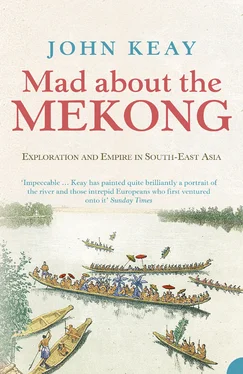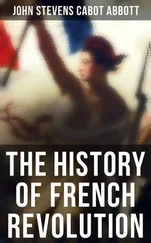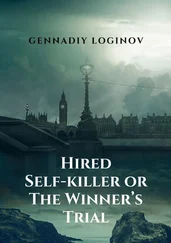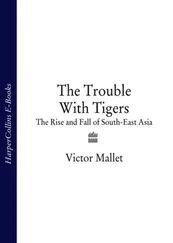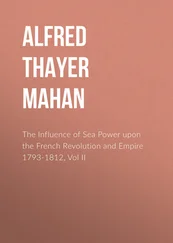1 ...6 7 8 10 11 12 ...17 The enthusiasm of Garnier and his companions could not be faulted; nor could their arguments be easily rebuffed in the then state of ignorance about the river. The powerful Navy Minister had gratefully taken up the cry, threatening resignation if not heeded. The struggling colony had been reprieved. And in 1865 the Mekong Exploration Commission had been authorised.
It would be an exaggeration to say that the colony’s future depended entirely on the success of the expedition; other factors would be just as influential. But the weight of colonial expectation was considerable and it bore heavily on all the expedition’s personnel, none more so than Garnier. Whether or not the Mekong itself lived up to his billing as a highway to inland China, he for one was resolved that the expedition must somehow proclaim the political, strategic and economic advantages of extending French rule in the region. In effect, he must make the case for what he called ‘a new empire of the East Indies rising in the shadow of our flag’.
Writing of the lands through which the river supposedly flowed, Garnier and his friends popularised the term ‘Indo-China’. Although not their invention, it epitomised their thinking. It would figure in the titles of the expedition’s official report, of Garnier’s personal account and of Louis de Carné’s. ‘Indo-Chine’ might be unknown to its inhabitants, but the adoption and promotion of the term by the French awarded to the lands along the Mekong a new and convincing territorial integrity. Better still, it defined this integrity in terms which other European powers would understand. The region was no longer to be regarded as some hybrid borderland between other people’s empires in India and China proper. As Indo-China, it was an arena for colonial endeavour in its own right. Indeed, in Garnier’s fevered imagination it would be to France an ‘India-and-China’ in one – compensation for past disappointments in both, and equivalent to either in prestige and potential. It would also be a sensational assertion of France’s revival under the ‘Second Empire’, and might one day become the ‘jewel in the crown’ of French possessions, indeed ‘le perle de l’Empire’ as later writers would put it.
The river offered some grounds for taking the idea of ‘Indo-China’ seriously. Its basin evidently embraced most of the lands that comprised the south-east Asian peninsula, and its course would be found to thread through them. Like the hanked necklaces nowadays being hawked in every Cambodian market, the looping Mekong strings together cultural souvenirs of unmistakably Indian provenance with jade-and-porcelain reminders of China, both being interspersed with filler-beads of dark wood and chunky silver from the intervening lands.
Angkor is Indian – or Indic, a word implying linguistic association rather than any aggressive acculturation from India. Debate rages as to the primacy given by its builders to Buddhist as opposed to Hindu cults (or, indeed, whether they should be deemed mutually exclusive); but the aesthetic of Angkor, the iconography, the scale and the building techniques all find parallels in the Indic monuments of Indonesia and take their inspiration from India itself. Also Indian are the Angkor scripts, indeed the Khmer script in use today and even the name ‘Cambodia’ (or ‘Kampuchea’ as those traditionalist sticklers in Pol Pot’s Khmer Rouge regime preferred); both words derive from Kamboja, a place name and lineage bestowed on several remote kingdoms in ancient Sanskrit literature.
To archaeologically inclined empire-builders like Lagrée and Garnier, Angkor’s Indian associations were as exciting as its scale. If for no other reason than to spite Britain’s pretension to a monopoly of all things Indian, they found the site a mouthwatering experience; and they did not doubt that it would soon be restored to Cambodia – and so come under French protection.
From their base in Angkor Wat, which Garnier immediately dubbed ‘the Buddhist Nôtre Dame’, they explored Angkor Thom, or ‘Great Angkor’, the nearby palace-city. Even the lugubrious de Carné was mildly impressed, although still determinedly downbeat. It was all very remarkable, he thought, but where were the people, their history, their literature? ‘The ruins of a monastery mouldering in the bosom of an English wood … move us more deeply.’ Mouldering English monasteries being the lowest form of what was recognisable as civilisation, Angkor was off the scale; it was just too much, too barbaric, too dead.
To the more fanciful Garnier it was more like a living fairytale. The city’s towered gateway with its myriad stone faces put him in mind of The Thousand and One Nights. They rode towards it on elephants through trees of Brobdignagian proportions and over a riverwide moat by the so-called ‘Bridge of Giants’.
You can still do this. The elephant-ride costs ten US dollars and the steel tubing of the howdah is reminiscent of a prison cage. But at least for elephants, the traffic is stopped and the gateway’s images may be examined at leisure. Alternatively you can just donate a fistful of Cambodian riels to the mahout; for that, you gain merit and the elephant gets a banana.
Crammed into one of the puffing little canonnières , the French explorers had taken two days to sail from Phnom Penh to Angkor – one to navigate the Tonle Sap river which connects the Mekong to the Great Lake and another to cross the Great Lake itself. Nowadays the whole trip takes five hours in an eighty-seater river-cruiser offering five karaoke, iced beer and chronic sunburn on the cabin roof. All boat journeys in Cambodia take five hours. Promoters have latched onto the idea that five hours is an acceptable journey time for foreigners, distance and horsepower notwithstanding.
Given a run of 270 kilometres, the Phnom Penh – Angkor cruisers go some way towards discrediting the idea that Cambodians have no sense of urgency. Snug at the apex of a surfer’s dream wave, they slice through the cat’s cradle of fishing lines along the Tonle Sap river, casually capsizing sampans and dousing innocent bottoms in slatted riverside toilets. Acres of water hyacinth are no impediment; they hightail over them like heifers on spring pasture, pausing only to reverse engines and disentangle propellers before making a three-hour dash across the choppy seas of the Great Lake itself. Big barn-like wats, startled from their morning meditations beneath a stack of upturned roofs, whiz past in a blur of maroon, gold and whitewash; corrugated towns peek from the towpath through a curtain of sugar palms; a hazy escarpment to the north interrupts an otherwise unpunctured horizon. Opinion rates the voyage an adventure, not a cruise.
At thirty knots it is quite impossible to ascertain which way the Tonle Sap river is flowing. For most of the year it definitely runs into the Mekong; but in June, when the expedition sailed up it, it was definitely running out of the Mekong. Garnier would confirm as much on the return journey. The Tonle Sap river is in fact that rarest of fluvial oddities, a river that flows both ways.
As the only link between the Great Lake and the Mekong, it is about eighty kilometres long and, where its course is defined by embankments, as wide as the Thames at Maidenhead. It is not deep, but like the Great Lake itself it supports what is said to be the richest freshwater fishery in the world. Fishing rights operate like logging rights and are no less controversial. Auctioned by the government, they make a substantial contribution to the national exchequer but occasion bitter accusations of corruption. Additionally successful contractors, in an effort to recoup both their bids and their bribes, are inclined to flout the regulations against electrocution-fishing and the use of explosives. The losers, apart from the fish, are inevitably the local fishermen, who nurse an abiding sense of injustice. Unpopular concessions require the protection of armed guards, and as catches decline, violent affrays are of frequent occurrence. These may have an international dimension. As in the timber trade, foreigners are well represented, notably the Vietnamese whose cross-eyed trawlers still monopolise the offshore waters of the Great Lake just as they did in the 1860s.
Читать дальше
